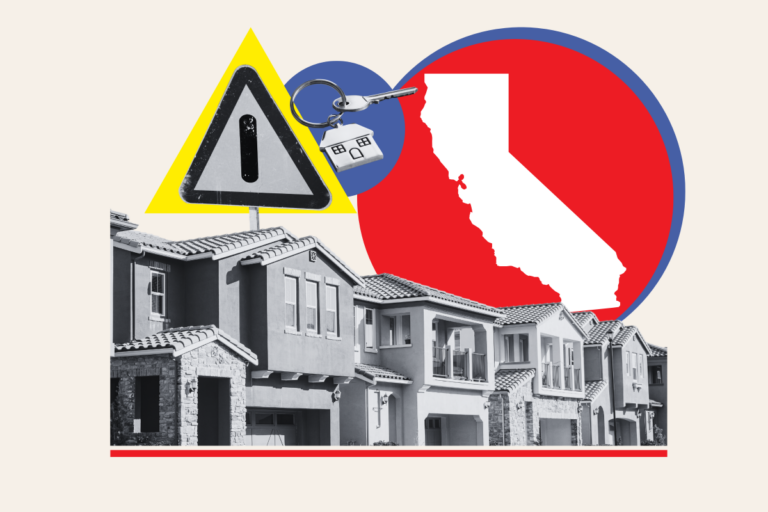California’s Shifting Risk: Flooding to Surpass Wildfires
Devastating mudslides and flooding are poised to become the most significant risk for California homeowners in the next 25 years, overtaking the threat of wildfires, according to a recent study by CoreLogic. The company’s analysis indicates that by 2050, homes in Los Angeles, San Diego, and San Francisco will face a higher flood risk than wildfire risk, potentially forcing owners to purchase additional, costly insurance to protect their properties.
The shifts in risk are being driven by climate change which is intensifying the frequency and severity of natural disasters across the U.S., presenting new challenges to the home insurance market. Private insurers are wanting to adjust their rates, factoring in increasing expenses and the growing exposure to catastrophes. Regulators, however, are tasked with balancing these requests while maintaining affordable premiums for homeowners.
The Growing Threat of Flooding
Data from The Nature Conservancy shows that 8.8 million acres in California are susceptible to flooding—equivalent to roughly 16 percent of its urban and suburban development and 36 percent of its land dedicated to cultivated crops. Though not as severe as some other states, California faces a complex and evolving challenge.
Talley Burley, a manager in Climate Risk & Insurance at the Environmental Defense Fund (EDF), noted, “While wildfire risk, drought, and heat waves may be more prevalent in Western states like California, flooding is the most frequent and costly natural disaster in the United States.”
Burley further explained that the impact of past wildfires exacerbates flood risk. “Wildfires burn vegetation that is critical to absorbing rainfall and reducing runoff…burned areas increase the likelihood of flash floods and mudslides.” This effect means that even areas not traditionally considered high-risk might now face a greater flood risk.
The increasing flood risk is evident in Los Angeles County, where recent wildfires destroyed crucial vegetation, paving the way for an atmospheric river in February that caused further devastation. CoreLogic projects this pattern to worsen, making flooding the primary concern for California homeowners.
In Los Angeles, the current flood risk is rated at 9 points, expected to rise to 14 by 2030 and 58 by 2050. San Diego’s current flood risk is 9 points, predicted to increase to 13 by 2030 and 53 by 2050. San Francisco currently has a flood risk score of 8 points, which is expected to climb to 14 by 2030 and 53 by 2050. The risk score ranges from one (very low) to 100 (extreme). A score between 36 and 55 suggests potential moderate property damage, while between 56 and 70 indicates potential for high property damage.
Insufficient Coverage
Flood damage is not typically covered by standard homeowners or renters insurance. As a result, residents may have limited options for coverage. FEMA’s NFIP is one avenue, but it’s not always required. Properties in high-risk areas, as defined by FEMA’s flood maps, are required to have flood insurance if they have a federally backed mortgage, or if the property has previously received federal disaster assistance, Burley explained. For properties outside these areas, flood insurance is voluntary.
Burley stated, “Climate change is driving more frequent and intense climate-related events, such as flooding.” This increases the intensity of heavy rainfall, which can trigger flash floods and urban flooding, especially in areas with limited drainage and low-lying regions. It’s important to note that current FEMA flood maps don’t comprehensively account for all types of flood risks, and they do not account for the growing risk due to climate change.
Less than 2 percent of California homes have flood insurance, according to Politico. This may be because it is not required for federally backed mortgages in California, unlike fire insurance, as suggested by Burley.
Costs and Challenges Ahead
Flooding can cause billions of dollars in damages, and flood insurance is likely to become more expensive for California homeowners in vulnerable areas in the future. FEMA estimates one inch of water can inflict up to $25,000 in damages.
Homeowners who cannot find coverage in the private market can turn to FEMA’s NFIP, even though those rates may be rising, particularly in high flood risk areas. The average NFIP policy costs about $866 annually, or $72 per month, as estimated by Rob Bhatt, an insurance analyst for LendingTree, according to Politico.
Burley pointed out, “Growing flood risk may cause the cost of flood insurance to rise over time.” Rising insurance expenses could make housing affordability and accessibility more difficult for all homeowners, Burley said, while making it harder to recover from climate-related events for those without coverage.
Because flood damage is not covered by traditional homeowners or renters insurance, without flood insurance coverage a household that experiences a flood event may have to pay for damages out-of-pocket or rely on federal disaster assistance, which is not guaranteed and can take months to reach impacted households.



